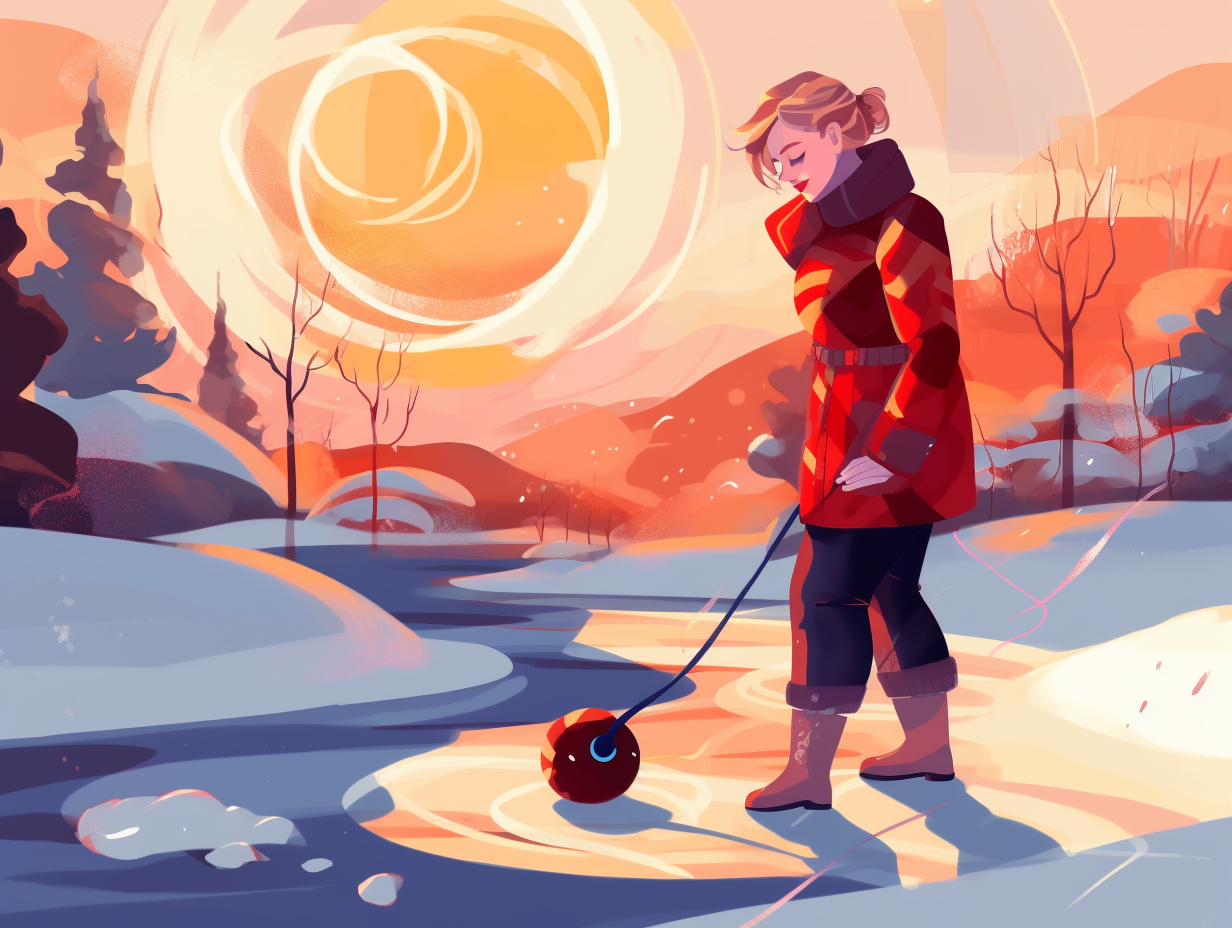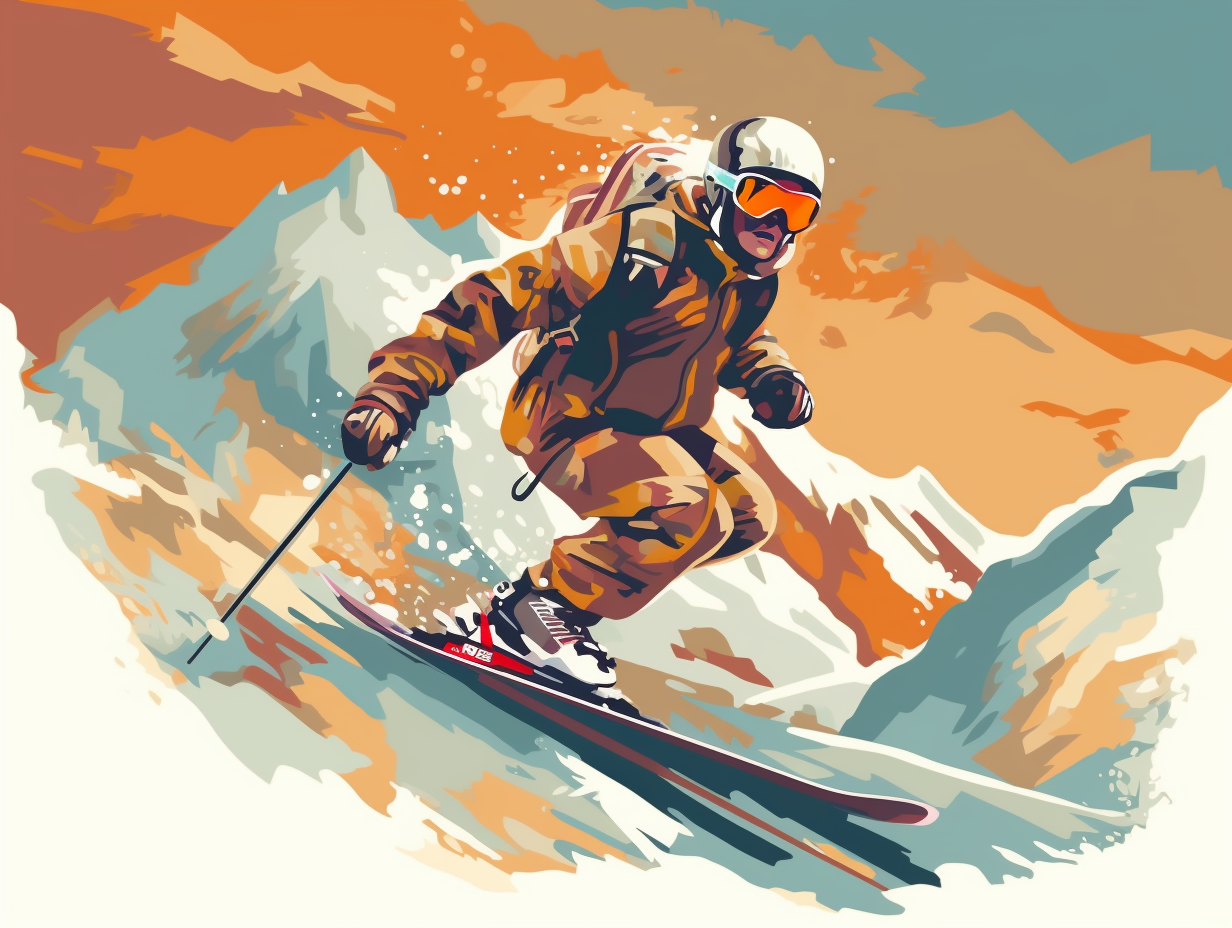Discover the Intriguing World of Curling: Top 13 Fun Facts That'll Sweep You Off Your Feet

1. Curling: From Hogwarts to Olympics
Before Hogwarts students had the thrill of Quidditch, Scottish folks were sliding hefty stones on ice with glee, for a sport called curling: First recorded in 1541, curling traveled across the Atlantic with Scottish immigrants and continued to gain popularity, now boasting Olympic prestige, 10 ends of stone-hurling excitement, and even the magical power of ice-sweeping to alter friction and trajectory!
Source => time.com
2. Monks Spark "Game of Thrones: On Thin Ice"
In a sweeping monastic rivalry that could have inspired "Game of Thrones: On Thin Ice," a Scottish monk and a relative of the abbot once hurled stones across frozen ponds in 1541, giving birth to a centuries-long love for curling: The sport gained popularity over time and even earned royal patronage with the establishment of The Royal Caledonian Curling Club in 1838, eventually leading to the construction of Scotland's first indoor ice rink in Glasgow in 1907.
Source => scottishcurling.org

Did you know Tonya Harding's triple axel made her the first American woman to conquer this challenging jump in competition? Discover more figure skating feats! 🌟⛸️
=> Fun Facts about Figure-Skating
3. Curling: Competitive Housekeeping on Ice
Before you assume the sport of curling was created when a group of overzealous janitors stumbled upon an ice rink: the sweepers in curling are, in fact, crucial team members responsible for controlling the stone's movement. By reducing friction on the ice, their meticulous sweeping allows the stone to glide farther and straighter, ultimately influencing the amount of curl it undergoes. So it turns out, curling is less "Whose Line Is It Anyway?" and more like carefully choreographed housekeeping on ice!
Source => ssec.si.edu
4. From Corn Bros to Carbon Fiber
Before the curling broom went all fancy shmancy with its modern materials, you could've just borrowed your mother's corn broom to sweep your way to victory: The early curling brooms were made from corn strands, but as the game gained popularity, brooms evolved to incorporate materials like carbon fiber and synthetic fabrics for a swankier sweep.
Source => sportsmatik.com

5. Ailsa Craig Granite: The Pride of Scotland
When Taylor Swift said "You threw your hands in the air, I was there, I remember it all too well," she clearly wasn't talking about a curling competition – because rock stars have no place in the world of stones and brooms: In fact, the granite used in curling stones comes from the Scottish island of Ailsa Craig, weighing between 38 and 44 pounds, with an average weight of 42 pounds. And for the record, they're called stones, not rocks! At the Olympics, one set sports red handles while the other prefers a sunny shade of yellow.
Source => nbcolympics.com
6. Scottish Magic in Ailsa Craig Stones
Forget Harry Potter and the Philosopher's Stone, we've got Scottish stones that'll make you quidditch your doubts about curling: Every Olympic curling stone is crafted from top-tier Ailsa Craig granite, sourced precisely from the small island of Ailsa Craig in Scotland – contributing both its mystical green body and sturdy blue running band to these magical rocks that glide through ice.
Source => olympics.com
7. Lola Holmes, 101-Year-Old Curling Marvel
Who said retirement is for slowing down? Lola Holmes is a living testament that age is just a number and sliding on icy surfaces can be a rockin' good time: At the ripe age of 101, Lola holds the Guinness World Record for the oldest living curling player, having restarted her passion for the sport in her early 80s after retirement, enjoying not only a healthy mind and body but also camaraderie with fellow frosty frolickers.
Source => curlingzone.com
8. Hand Signals: The Curling "Texts"
Who needs emojis and texting when you've got brooms and stones? Curling skips have been keeping it old school with their very own form of non-verbal communication: Hand signals and broom tapping on the ice are used to instruct their teammates on the direction, curl, type, and length of throw desired during a game, allowing for artful strategy and execution.
Source => calgarysportsclub.com
9. In Pursuit of the Elusive Eight-Ender
Feeling a bit "stoned" during a curling match? It's nothing like that – we're talking about an eight-ender, a high that makes curling enthusiasts go bonkers: An extremely rare accomplishment in competitive curling where all eight stones from one team score points in a single end, with the first-ever recorded back in 1952, and a prestigious Canadian award to toast this icy milestone.
Source => en.wikipedia.org

10. Curling Stones: Disco Boulders on Ice
Ready to rock and roll... or should we say "rock and curl"? Curling stones, the dance partners in this slippery waltz, might appear to have just waltzed out of a geological discotheque: Made from classy granite, these funky boulders weigh in at no more than 19.96 kg, boast a maximum circumference of 91.44 cm, and strut a minimum height of 11.43 cm. And don't forget their groovy plastic handle on top – that's what makes these party animals spin, creating the curling effect that gives the sport its name!
Source => cbc.ca
11. International Sweep to Victory
In a world where nations come together on the ice, united in their quest for curling glory, it's not just the Canucks who sweep their way to the top: The World Curling Championships have seen teams from countries such as Switzerland, Sweden, Norway, and the United States all claim victory, proving their mastery over the slippery realm of this fascinating sport.
Source => en.wikipedia.org
12. Slide Technique: Curling's Slip'N Slide
Before the invention of the curling Slip'N Slide, players must've felt like they were throwing rocks at an ice-cold house party: Ken Watson revolutionized curling in the 1940s by introducing the slide technique, using a slippery surface under the non-hack foot to masterfully control the weight and direction of the rock, shaping how the sport is played today.
Source => curlingschool.com
13. Hockey Rinks: Tequila-Ice Skate Dilemma
Imagine trying to ice-skate on a giant margarita: you'd want the perfect thickness of frozen goodness to avoid sinking into a tequila-induced catastrophe! Well, hockey rink ice faces a similar conundrum: It requires between 45,000 to 57,000 litres of water to create a surface that is only ¾ inch to 1 ½ inch thick, with the entire process taking up to four days. Too thin, and skaters might slice to the concrete; too thick, and freezing becomes inefficient, leaving the top layer a slushy mess.
Source => howden.com
Related Fun Facts




















